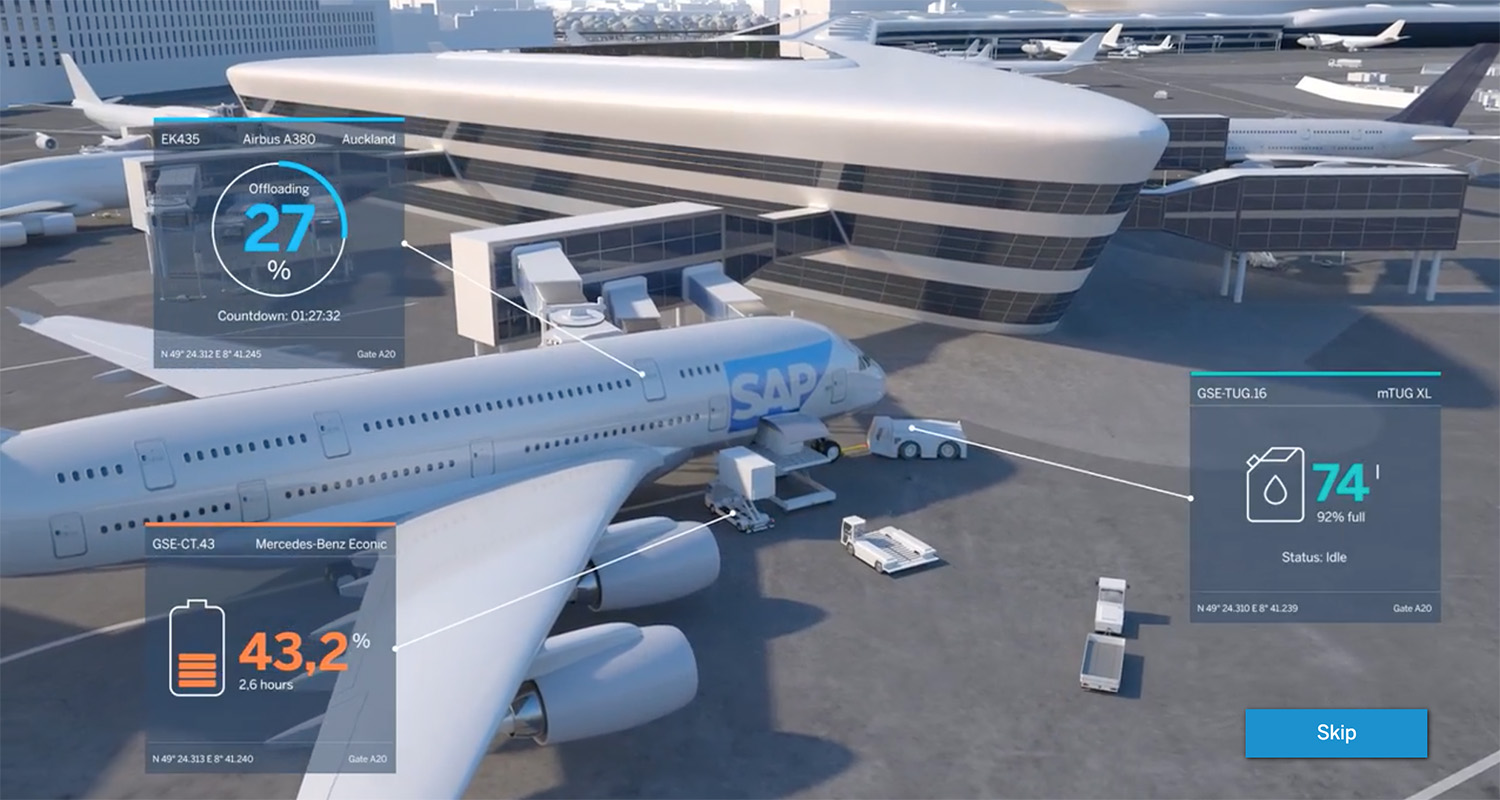I travelled through airports roughly eighty times last year — and it wasn’t always a wonderful experience!
There’s a great opportunity for modern technology to help every aspect of the airport experience, from streamlining voyages to improving customer satisfaction and increasing airport revenues.
Click on the image below to take part in an interactive vision of the airport of the future, powered by the internet of things, artificial intelligence, and real-time data — I had the honor of doing voiceover! (I don’t think I’ll be changing careers any time soon 😃)
To unlock the full potential of modern technology, airports have to intelligently connect people, smart devices, applications, and businesses. This will enable new business models for every sector of aviation, from passenger and freight businesses all the way through to airport stores and restaurants.
https://www.youtube.com/watch?v=4BZRFGhVP4Q
Some examples of where technology can help:
Connected Fleet. Connected vehicles enable better fleet management. Administrators can constantly track the location, status, and movements of each vehicle in real-time. Telemetry data provides insights into availability and usage patterns, helping optimize the use of resources. You can quickly identify potential problems and fix them before they actually affect operations. And the collected data can even be used to develop new business models.
Retail. It’s hard to overestimate how much airport profitability depends on non-aviation activities such as retail and advertising. And here as well, the Internet of Things opens up new possibilities. For example, retailers can determine the best locations for different types of campaigns, and adapt them to specific target groups. And with live information, they can even react to unexpected situations, taking advantage of the opportunities that arise.
Operations Room. The Operations Room is where it all comes together. People working here monitor and control everything that’s going at the airport. They use integrated systems to save travelers time and increase their comfort.
Let’s take parking, for example — an important source of revenue for airports. With a more integrated, intelligent parking system, passengers can be guided to free spaces as close as possible to their check-in counters, with easy electronic payment.
Integrated systems can help eliminate long waiting times at security checkpoints. Heatmaps, for example, can be used to show passenger flow throughout the airport. And this live data can be combined with flight-departure times, current passenger volumes, and historic trends to allow accurate forecasts of potential delays. This means operators can allocate staff more efficiently and travelers can spend more time shopping instead of being stuck in lines.
But technology isn’t everything!
It takes more than just technology to change the customer experience. Improving the airport experience requires the concerted efforts of the many different participants — the airport, the airlines, the maintenance crews, the retailers, etc.
Sadly, many of the common annoyances of travel aren’t anything to do with technology, but bad incentives — here are just some of them:
Underinvestment in border control staff. The number of staff on the immigration desk isn’t controlled by the airport but (ultimately) by government budgets. I’ve often stood in lines of hundreds of people, mentally calculating a conservative estimate of how much economic value is being needlessly wasted (spoiler: it’s WAY more than enough to pay for extra staff in the empty booths). It’s particularly galling to have wait hours in line while being assailed by videos informing you just how welcome you are to the country.
Border and security time estimates. I talked to one airport executive who explained that they tried a pilot system that estimated the time to go through border and security when leaving, but it was cancelled because:
- People went through security later, annoying the retailers on the airside, and jeopardizing the airport revenue. Airports, sadly, have an incentive to deliberately make you wait a long time before getting on your flight.
- If the estimate was ever wrong, and it took longer than announced, then fliers got annoyed, and flights were more often delayed.
Delay announcements. The departure times are often pure fiction. If the inbound plane hasn’t landed yet, then that sign saying on-time departure in five minutes just isn’t going to happen. But airlines don’t want to give more accurate estimates because:
- They prefer to have you in one place, not scattered around the airport where you’re going to get drunk and forget to come back.
- Plans change — by replacing a plane, say, the delay might conceivably drop back down, but the scattered passengers wouldn’t see the new announcement.
- Given all the variables, nobody really knows what the new time is going to be, and it’s “safer” to not give a time until it’s actually time to go.
Overbooking. It’s a classic — airlines sell more seats than they have, knowing some people aren’t going to turn up. Calls for better auction systems, whereby the airline has to offer as much money as it takes to get somebody to give up their seat, are to be applauded.
Overbooked airline slots. It is almost impossible for, say, every early-morning flight leaving Heathrow to be on-time… the airport runs at over 98% capacity and so the slightest delay has ripple-on effects.
Not enough seating. It seems like this has getting worse in some smaller city airports, where space is at a premium. Extra security took some of the place, and then there’s a tough choice between more seats/comfort for travelers, or more retail space…
Flight times. Planes are apparently getting slower… A decade ago, it used to take me less than an hour to fly from Paris to London — now it’s an hour and ten minutes. Is that because the airlines want better on time arrival statistics?
What airport annoyances did I miss? Could they be helped by better use of technology?


Comments
One response to “Airports: Preparing For Takeoff In The Digital Era”
[…] This article originally appeared on Digital Business & Business Analytics. […]